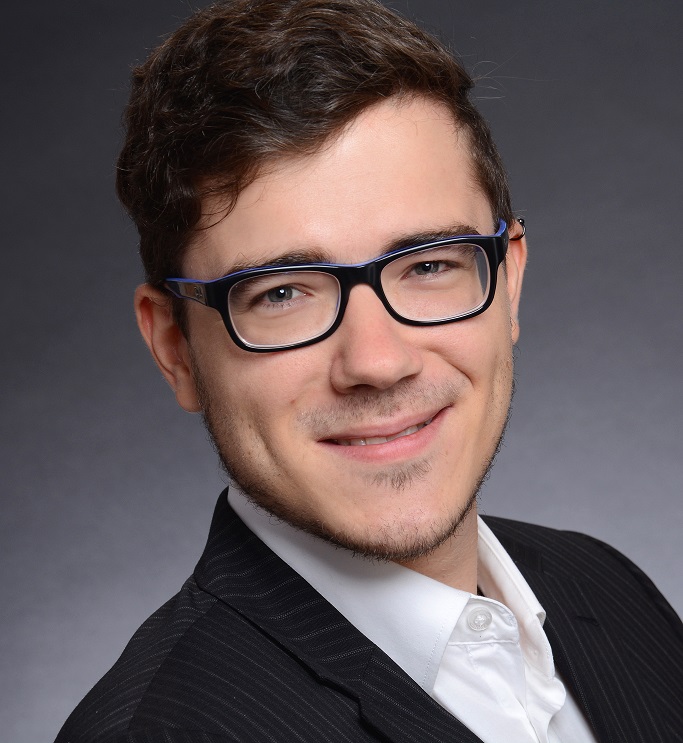Daniel Scharrer
Dr.-Ing. Daniel Scharrer
Short Biography
Starting 2010, Daniel Scharrer studied Energy Engineering at the FAU Erlangen-Nuremberg and successfully completed his studies in 2016. During his studies, he worked in the Department for Surface Technology of the Schaeffler GmbH in Herzogenaurach and for the Chair of Energy Process Engineering in Nuremberg. After a long stay abroad, he has been working as a research assistant at the Chair of Computer Science 7 for Computer Networks and Communication Systems since 2017. With the focus on Energy Process Engineering during his master’s degree, he is now working on the implementation of thermal components in the i7-AnyEnergy simulation model.
More Information
Publications
2023
- , , , , , , , , , , , , , , :
Wasserstoff in der Metropolregion Nürnberg – Analyse der Kompetenzen, Chancen und Herausforderungen
(2023)
DOI: 10.5281/zenodo.7628146
BibTeX: Download
(Techreport)
2022
- , , , :
Simulation and analysis of a Carnot Battery consisting of a reversible heat pump/organic Rankine cycle for a domestic application in a community with varying number of houses
In: Energy 261 (2022), Article No.: 125166
ISSN: 0360-5442
DOI: 10.1016/j.energy.2022.125166
BibTeX: Download
2021
- , , , , , , :
Simulation of the part load behavior of combined heat pump-organic rankine cycle systems
In: Energies 14 (2021), Article No.: 3870
ISSN: 1996-1073
DOI: 10.3390/en14133870
BibTeX: Download - , , , :
Dynamic Modeling and Sensitivity Analysis of a Stratified Heat Storage Coupled with a Heat Pump and an Organic Rankine Cycle
Winter Simulation Conference (Phoenix, AZ / Virtual, 2021-12-13 - 2021-12-17)
In: Proceedings of the 2021 Winter Simulation Conference 2021
DOI: 10.1109/wsc52266.2021.9715345
BibTeX: Download
2020
- , , :
Dynamic simulation of an HP-ORC-Heat Storage pilot plant for an economic evaluation and necessary cost reduction
International Conference on Applied Energy 2020 (Bangkok / Virtual, 2020-12-01 - 2020-12-10)
BibTeX: Download - , , , , , :
A model for triple generation of cooling, heating and electrical power with a seasonal pumped thermal energy storage
Applied Energy Symposium: Low carbon cities and urban energy systems (Tokyo / Virtual Conference, 2020-10-10 - 2020-10-17)
BibTeX: Download - , , , , , , , , :
Life Cycle Assessment of a Reversible Heat Pump–Organic Rankine Cycle–Heat Storage System with Geothermal Heat Supply
In: Energies 13 (2020), Article No.: 3253
ISSN: 1996-1073
DOI: 10.3390/en13123253
BibTeX: Download
2019
- , , , , , :
Simulation of Part Load Behaviour of Pumped Thermal Energy Storages with Real Load Profile
IRES 2019 (Düsseldorf, 2019-03-12 - 2019-03-14)
BibTeX: Download
2018
- , , , , , , :
Properties of Reversible Heatpump-ORC Energystorage Systems for Baseload Generation
12th International Renewable Energy Storage Conference (IRES 2018) (Düsseldorf, 2018-03-13 - 2018-03-15)
BibTeX: Download - , , , , , , :
Properties of Reversible Heat Pump ORC Energy Storage Systems for Base Load Generation
IRES 2018 - 12th International Renewable Energy Storage Conference (Düsseldorf, 2018-03-13 - 2018-03-15)
BibTeX: Download - , , , , , , , , , , , , , :
Reversible heat pump-organic rankine cycle systems for the storage of renewable electricity
In: Energies 11 (2018), Article No.: en11061352
ISSN: 1996-1073
DOI: 10.3390/en11061352
BibTeX: Download
Projects
-
Multi-sector coupled energy system modeling on a regional level
(Third Party Funds Group – Overall project)
Term: 2021-05-01 - 2024-04-30
Funding source: Bundesministerium für Wirtschaft und Technologie (BMWi)
URL: https://www.esm-regio.deReducing primary energy use and greenhouse gases are central goals of the energy transition. However, switching from fossil to regenerative energy sources is not enough to achieve them. An overarching view and optimization of the different sectors of the energy system - electricity, gas, heat and transport - can significantly advance the further development of the energy system in Germany. Potential exists above all on a regional level.The goal of the ESM-Regio project - short for "Multisectoral Coupled Energy System Modeling on a regional level" - is to create a temporally high-resolution energy system model on a county level that takes into account the four sectors of electricity, gas, heat and transport as well as the required interface technologies. A key feature of the project is a cross-sector model logic. Suitable simulation methods enable a holistic analysis and optimization of the system operation under consideration of the four relevant sectors of the energy system.
-
Dynamic Simulation of Energy Flows and Storage of Waste Heat from Data Centers and of the Integration of Large Storage Systems in Local Heating Networks
(Third Party Funds Group – Sub project)
Overall project: Energie Campus Nürnberg 2
Term: 2017-01-01 - 2019-12-31
Funding source: Bayerische StaatsministerienThe share of electricity from photovoltaics in the electricity mix in Germany has been greatly expanded in recent years. In the near future, electricity generation from renewable energies and thus also solar generated electricity will continue to increase. At high solar radiation, this already leads to a local oversupply in the power grid, while the photovoltaic at night naturally can not contribute to the power supply. Ensuring the nightly base load at night is therefore largely ensured by fossil production from coal and lignite with corresponding CO2 emissions.By using base load storage systems with low-temperature storage, the use of polluting thermal power plants should be reduced. During the day, heat from geothermal energy or industrial processes is upgraded with excess electricity from photovoltaics using heat pumps (HP) and stored in a low-temperature storage system. To generate nocturnal base load power, this heat energy is then removed from the storage via an Organic Rankine Cycle (ORC) process.
The aim of the project is the dynamic simulation of energy flows in HP-ORC heat storages that are integrated into the energy system and use excess heat and power. With the simulation models, the dimensioning and suitable operating modes for the economic operation of low-temperature storage systems should be investigated.
